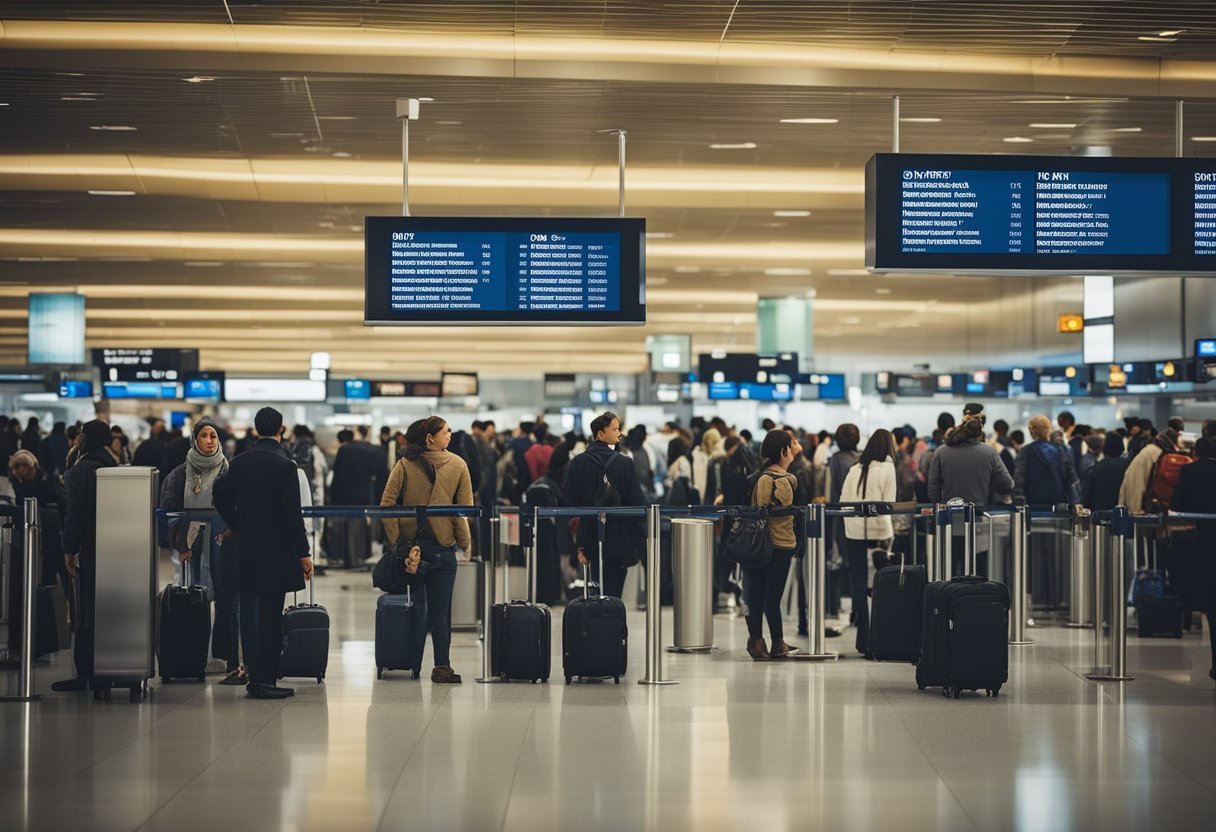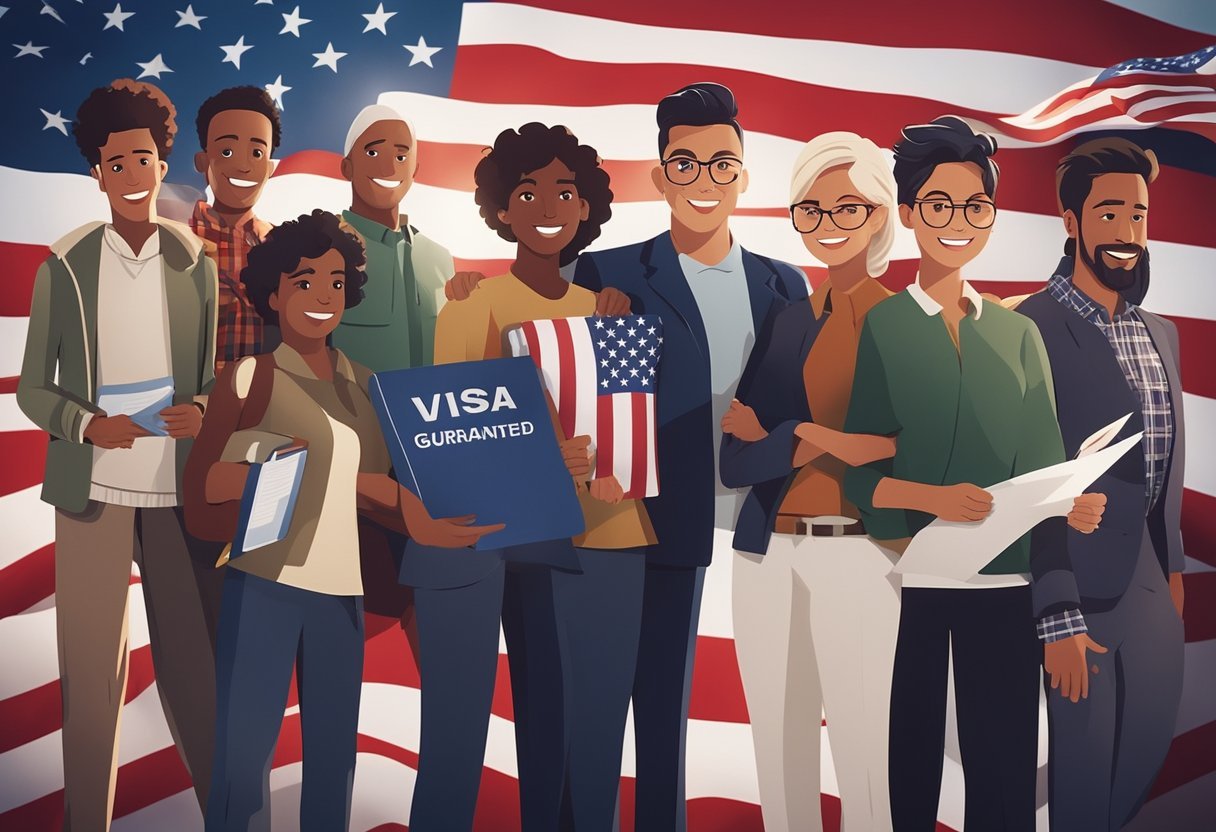Introduction

Migration to the United States embodies a dream for many individuals around the globe. The country is renowned for offering boundless opportunities and a vibrant cultural diversity. The United States serves as a magnetic destination for immigrants striving to fulfill their dreams and enhance their living standards. This section explores various subjects related to migration to America, including legal processes and requirements, as well as the challenges and opportunities faced by new immigrants.
The reasons for migrating to the United States are vast and varied, representing a shift to a new country with the aim of settling and creating a better future. Migration may arise from several factors, including the pursuit of employment, the desire to escape natural disasters, and, in certain cases, political and humanitarian asylum.
Common Pathways to Migration
The United States stands out as an attractive and famous destination for ambitious youth seeking to achieve their aspirations. The cultural diversity and wide-ranging opportunities it offers are significant draws. Among the prominent reasons for migration to America, education is at the forefront. Many young individuals aim to study in the country, and frequently, they choose to remain permanently after completing their educational journey.
Visa Options for Immigrants
The first step toward moving to the United States involves obtaining the appropriate visa. Various types of visas grant individuals permission to enter the country. Among these are student visas, which will be discussed in greater detail in this section.
International or foreign students generally require a visa to enter the United States for a specified period, which may last from a few months to several years, depending on the length of their studies. Student visas are issued and regulated by the United States Citizenship and Immigration Services (USCIS), and the application process can be quite intricate.
Types of Student Visas
The visa categories available for students include, but are not limited to:
- F-1 Visa: Primarily for international students enrolled in academic programs.
- J-1 Visa: For students participating in exchange programs that foster cultural exchange.
- M-1 Visa: Specifically for those in vocational or non-academic programs.
In addition to student visas, there are options for employment such as the H-1B visa and pathways to permanent residency known as the “Green Card.”
Challenges Faced by New Immigrants
As potential immigrants embark on this journey, they encounter various challenges. These can range from navigating complex legal processes to adjusting to a new cultural environment.
- Legal Processes: The immigration system can be daunting, with numerous steps to ensure compliance with regulations.
- Cultural Adjustment: New immigrants may face difficulties in adapting to the cultural norms and practices of American society.
- Financial Concerns: Establishing a stable financial footing can take time and effort.
Despite these challenges, the potential rewards for new immigrants are significant. They may experience personal and professional growth, enjoy better living conditions, and engage with a diverse community.
Opportunities for Growth
The opportunities available in the United States significantly outweigh the challenges for many. Immigrants often find:
- Educational Resources: Access to world-class educational institutions.
- Employment Opportunities: A robust job market with diverse career paths.
- Support Networks: Various community organizations provide resources and assistance for new arrivals.
By capitalizing on these opportunities, immigrants can work toward achieving their aspirations and contribute positively to their new communities.
Summary of Immigrant Experiences
In summary, the journey of migration to the United States encompasses many dimensions. From the initial decision to leave one’s home country to the steps taken to obtain the necessary visas, each stage presents unique experiences. New immigrants may encounter challenges, but they can also find ample opportunities that allow them to grow both personally and professionally in their new environment.
As individuals consider their migration options, understanding the pathways, challenges, and opportunities available to them is crucial. This knowledge enables them to make informed decisions as they seek to build their lives in the United States.
Visa Types and Methods to the USA

Diversity Visa Lottery
The Diversity Visa Lottery is designed to enhance cultural diversity in the United States by offering immigration opportunities to individuals from various countries. Through an annual drawing, the government awards visas to selected applicants who meet specific eligibility criteria, including a high school education or relevant work experience. Applicants should stay informed about official dates and detailed requirements announced by the U.S. Department of State.
Advantages:
- Provides a pathway for individuals from diverse backgrounds to obtain permanent residency in the U.S.
- Allows for immigration without the need for family sponsorship or a specific job offer.
Disadvantages:
- Winning the lottery is not guaranteed, creating stress and uncertainty for applicants.
- Securing a visa requires navigating additional, often complex, procedures after winning.
Visitor and Tourism Visa (B-1/B-2)
The B-1/B-2 visa allows individuals to visit the United States for tourism, family visits, or temporary business purposes. This visa generally permits a stay of up to six months with a typical validity of one year.
Advantages:
- Offers the chance to travel to the U.S. for tourism, medical treatments, or family visits; the application process tends to be straightforward.
Disadvantages:
- The duration of stay is limited and may require an extension for longer visits.
- Holders of this visa cannot engage in any form of employment while in the country.
Student Visa (F-1)
The F-1 visa is issued to individuals intending to study in the U.S. within a recognized academic program. Applicants must be accepted by a legitimate educational institution and demonstrate the financial capability to support themselves.
Advantages:
- Permits students to study in accredited programs within the United States.
- Students can access various academic and cultural benefits during their studies.
Disadvantages:
- Tuition fees in the U.S. can be high, posing a significant financial challenge for many students.
- Obtaining the visa might be difficult, especially if approval hinges on proving financial eligibility.
Work Visa (H-1B)
The H-1B visa targets skilled workers and professionals employed in specialty occupations in the U.S. Employers must demonstrate that no qualified U.S. citizens are available for the position before hiring a foreign worker.
Advantages:
- Enables skilled workers to secure employment with U.S. employers.
- May offer substantial career advancement opportunities and competitive salaries.
Disadvantages:
- This visa type has an annual cap, leading to intense competition among applicants.
- Continued residency is tied to employment; losing a job can result in the loss of status.
Spousal Visa (K-1/K-3)
The K-1 and K-3 visas are issued to foreign spouses of American citizens wishing to immigrate to the U.S. The K-1 visa allows the foreign partner to enter the U.S. temporarily, with the expectation of marrying within 90 days. Meanwhile, the K-3 visa is for spouses after the marriage is recognized.
Advantages:
- Facilitates the reunion of couples separated by international borders, allowing for quicker immigration processes compared to other visa types.
Disadvantages:
- The process may involve extensive paperwork and longer waiting periods for visa approval.
- Couples may face challenges in proving the legitimacy of their marriage during the application.
Family-Based Visa
Family-based visas allow U.S. citizens and permanent residents to sponsor family members for immigration. This category includes several types, such as immediate relative visas and family preference visas.
Advantages:
- Supports family reunification by allowing relatives to join their loved ones in the U.S.
- Various categories exist, accommodating different family relationships and immigration priorities.
Disadvantages:
- The process may be lengthy, with backlogs in certain family categories causing delays.
- Visa availability can depend on the sponsor’s immigration status, with limits on preference categories.
Investment Visa (EB-5 Investor Visa)
The EB-5 visa leads to permanent residency for foreign investors who meet specific financial and job creation criteria in the U.S. economy. Applicants must invest a minimum amount in a new commercial enterprise and create a necessary number of jobs for U.S. workers.
Advantages:
- Provides a direct route to a green card for individuals willing to invest in the U.S.
- Investors can gain permanent residency status for themselves and their immediate family.
Disadvantages:
- The significant financial commitment required can be a barrier for many applicants.
- The process includes rigorous scrutiny of the investment’s legitimacy and compliance with regulations.
Cultural Exchange Visa (J-1 Exchange Visitor Visa)
The J-1 visa facilitates cultural and educational exchange programs for individuals participating in various exchanges, including students, scholars, and professionals. This visa promotes mutual understanding between the U.S. and other countries.
Advantages:
- Offers unique opportunities for cultural exchange and professional development.
- Participants can gain valuable experience and knowledge in their fields.
Disadvantages:
- The program may be limited to specific fields or durations, restricting flexibility.
- Visa holders must return to their home country for a period after their program concludes, as stipulated by the terms.
Seasonal Worker Visa (H-2A/H-2B)
The H-2A and H-2B visas allow U.S. employers to hire foreign workers for temporary agricultural or non-agricultural positions, respectively. These visas address labor shortages during peak seasons.
Advantages:
- Provides employers with a reliable workforce when local labor is insufficient.
- Foreign workers can earn employment and wages that may be higher than those available in their home countries.
Disadvantages:
- The visa duration is typically short-term, which may not provide job stability for workers.
- Applicants face specific eligibility criteria and must compete with various other candidates.
Journalist Visa (I Visa)
The I visa is specifically designed for representatives of foreign media, including journalists, reporters, and filmmakers, who need to be in the U.S. for professional purposes.
Advantages:
- Grants access to resources and information valuable for reporting and media production in the U.S.
- Supports international journalism efforts and fosters cross-cultural communication.
Disadvantages:
- The visa is only valid while performing specific professional duties, limiting personal travel activities.
- There are distinct eligibility requirements that must be met to qualify for this visa type.
Conclusion

Navigating the complexities of U.S. visas presents various opportunities and challenges. Each visa type serves unique purposes, requiring individuals to closely consider their personal circumstances, aspirations, and financial situations before applying.
Preparation is crucial for applicants. Staying informed about the latest immigration laws and regulations is essential for enhancing the chances of success. Engaging with legal professionals and authorities can provide valuable insights and support during the application process.
Key Considerations:
- Personal Goals: Define clear objectives for living or working in the U.S.
- Financial Assessments: Evaluate financial readiness for the visa application process.
- Legal Awareness: Keep updated on changes in immigration policies.
Challenges may arise, but a positive mindset paired with determination can lead to achieving aspirations in the U.S. With adequate preparation and adherence to legal requirements, successful immigration is within reach.
Applicant Reminders:
- Research Thoroughly: Understand the specific requirements of the chosen visa.
- Seek Professional Guidance: Consult with immigration lawyers when needed.
- Remain Vigilant: Monitor any updates in immigration legislation that may impact the application.
With perseverance, individuals can embark on their journey to build a promising future in the United States for themselves and their families.




